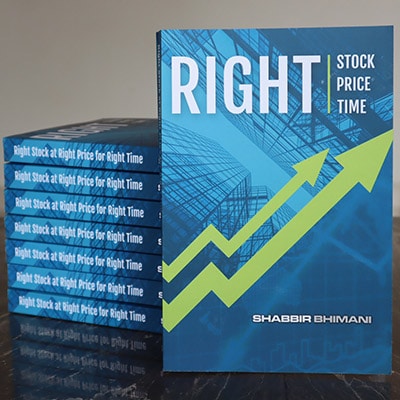Complete business analysis step by step process to select a company for investing. Example of Fine Organics – a company from the chemical sector
One of the most asked questions among my blog reader is to know the complete process I use to analyse a business. So today, I will share the comprehensive analysis of a company – Fine organics, in a step-by-step process.
I have also shared the complete business analysis of PI Industries.
Investing in any listed company, including Fine Organics, is not recommended. I am not a SEBI registered broker to recommend any stock. I have chosen Fine Organics to help my readers understand how to analyse a business for investing.
Still, I will not talk about price information. Instead, I will share information to analyse the underlying business in Fine organics. Everything I am sharing is available in the public domain.
So now, without much ado, let’s begin.
Step 1: Reject a Business for Investing
The first step to becoming a good investor is to analyse a business and reject the company for investment without too much effort.
More than 3000 companies are trading on NSE and BSE. If you analyse each of them, revisiting a stock investment can take a long time. So if I can reject the wrong businesses to invest in, it can save me a lot of time and energy to spend on good companies.
So the first set of rules that I use for rejecting a business is using the financial ratios and investment checklist.
- ROCE of consistently above 15%
- Debt to Equity ratio of under 0.5
- Operating Profit Margin or OPM in at least double-digit.
- Consistent EPS Growth for 3,5, and 10 years.
- Promoter Holding depends on how large a company is.
- What is the Cash Flow to Net Profit Ratio?
Initially, I was pretty rigid on the financial ratios. I learned it by missing the investment opportunity of Avenue Supermart or DMart. It has a low OPM of under 10%, which made me pass on the investment opportunity back then.
However, I realised some businesses compromise on the margin for very high growth. So, now I am also ready to compromise on some parameters for higher growth.
However, I never take debt lightly.
Step 2: Sector Analysis
Once the business passes the basic financial parameters, it is an ok to invest in it. However, we invest in the future, and what is more important is the business opportunity that may be ahead for the company to keep growing.
Like for example, Reliance Industries, in the past, has always been an excellent company to invest in. However, oil as a sector had minimal opportunity for growth. Whereas Asian Paints was an excellent company to invest in, the industry was growing.
So sector analysis is a crucial aspect to invest in. Rather than calling it sector analysis, I like to call it business opportunity analysis.
Considering the example of Fine Organics, the company has been working for 50 years. As a result, it has developed expertise in the taste of each chemical they supply to food companies.
They also are a supplier of additives to
- Plastic
- Rubber
- Cosmetics
- Pharma
- Paints
- Inks
- Textiles
So the opportunity is enormous, and Fine Organics has just started its long growth journey.
Step 3: Business Analysis
Finally, we will do the actual analysis of the business. Again, I use my business checklist to analyse the company.
The critical aspect is understanding the company’s growth, debt, and competition because I prefer to invest in a unique business with very little competition.
The peers we see on sites like a screener aren’t enough because they may be in the same sector but not compete with the underlying business.
So I look for the following in Fine Organics.
- Pricing Power of Business
- Simple Business Model
- Growth Outlook
- Profitable Operations
- Research and Innovation
- The Debt Factor
- Operational Efficiency
- Sector Leadership
Anything and everything that can help me understand the business.
Now, let me share how I have analysed each point for Fine Organics, which has helped me to analyse the business better.
Pricing Power of Business
The company is one of the only manufacturers of oleochemicals. Therefore, I recommend investing in unique businesses; Fine Organics is one such company.
Because there are very few oleo-chemical manufacturers, the business has good pricing power.
Simple Business Model
Fine Organics has few subsidiary companies, making it a relatively simple business for me to understand.
Growth Outlook
The product Fine Organics manufactures are used by us daily.
Even the bread you may have had recently is likely to have had tasing agents manufactured by Fine Organics.
The point I am trying to put forward is the company’s considerable growth potential.
I agree the past financial, especially for 2021, has had no growth. However, 2021 is not the right year to judge the company’s potential.
Profitable Operations
Yes, the company has completed 50 years in the business, has grown steadily, and is profitable.
It is one of the most significant advantages for companies like Fine Organics.
Another example is Burger King. It has high growth. It will set up new restaurants for growth, which means furniture and other depreciating assets. So a high amount of depreciation in the Profit and Loss statement makes it unprofitable.
Whereas for Fine Organics, the growth is profitable.
Research and Innovation
The company has reached from 380 odd products to 400+ from 2017 to 2020. It shows the focus of the company is research-focused.
Research allows the company to innovate and formulate newer, more effective additives for various sectors and industries.
The Debt Factor
I never take it lightly on the debt. Any company that has gone out of business has a debt repayment issue.
So the company may or may not do well, but there are high chances that they can have hiccups in bad times if there is high debt.
For Fine Organics, the debt is continuously coming down. As a result, the debt-to-equity ratio is around 0.1 and is less than 0.5.
Operational Efficiency
Companies with an operating profit margin or OPM of around 20% are good enough for me to consider the investment.
Furthermore, because there isn’t enough regulation on profitability, the company can quickly increase their operational profits as they grow.
Sector Leadership
Yes, Fine Organics is a leader in the manufacturing of oleochemicals. They have been working for 50 years and are a clear leader in the niche sector.
Final Thoughts
I invest in a company as if I am doing that business.
So I need to know a lot about the business before investing in a company, and Fine Organics is no different.



Leave a Reply